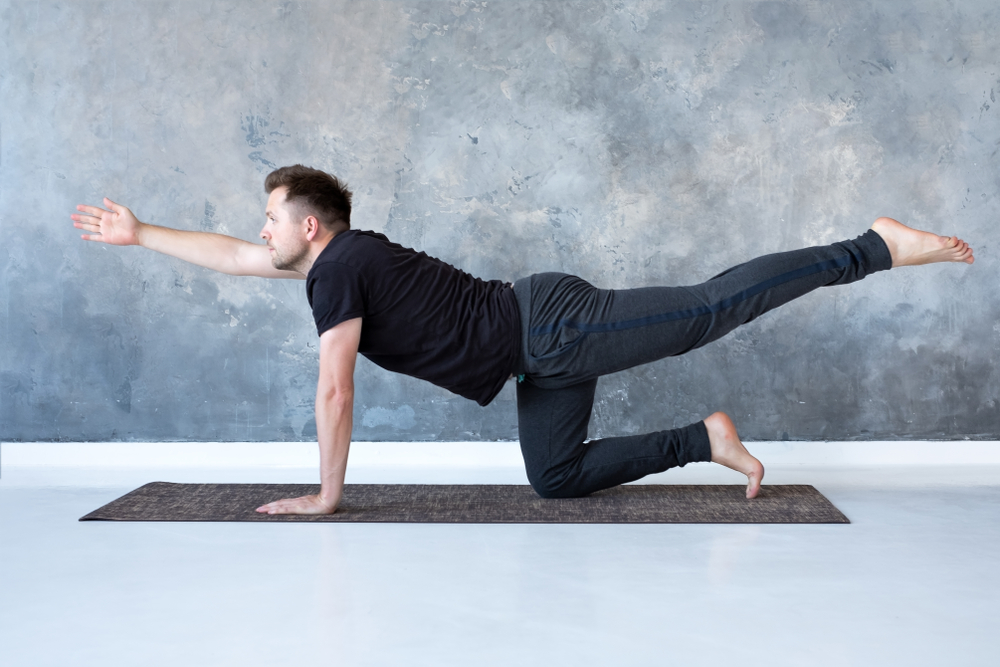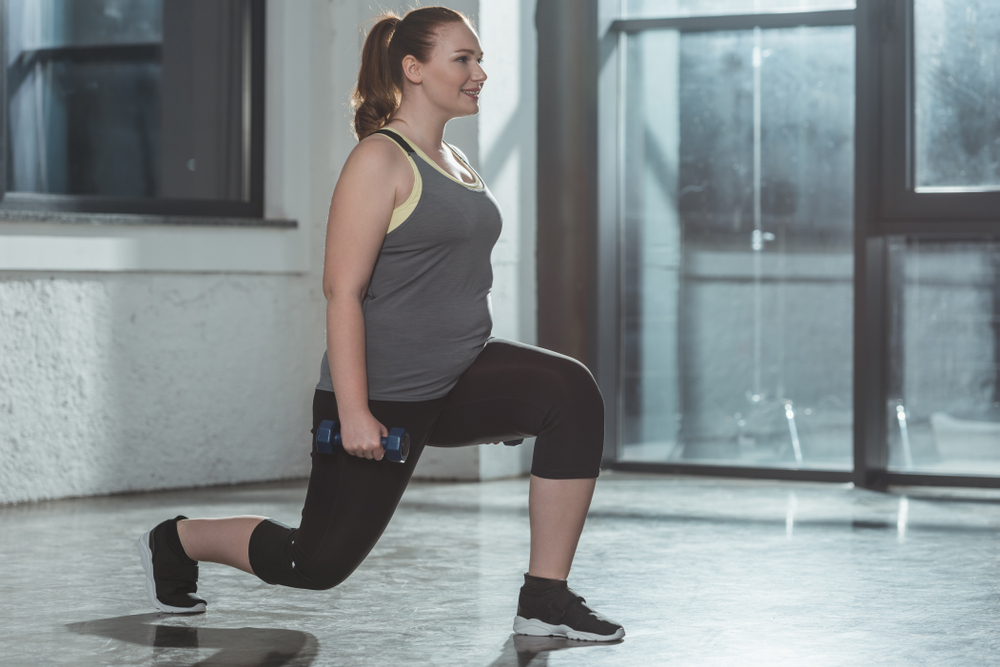Being a parent can take a huge toll on your body – especially your back.
The problem is that most people don’t even take notice of their back until it hurts.
Every time you take a step, pick up your child, stoop to grab a toy or sling a shopping bag over your shoulder, your spine and the muscles around it must bend, flex and bear the stress of your movements.
And, if you don’t take care of your back, the resulting pain can be incapacitating.
This is not good news for busy parents.
Fortunately, there’s a lot you can do to prevent back pain – specifically, doing exercises that strengthen the muscles that support the spine.
The stronger these muscles are, the better you can recover from injury as well as prevent serious ones from occurring.
Check out these quick and easy moves that you can perform every other day to keep your back strong and healthy:
1. Hip Bridge

Laying on your back, with your feet flat and hip-width apart, relax your arms and bend your knees.
Squeeze your butt as you lift your hips to create a straight line from the knees to the shoulders.
Hold for a slow count of two before slowly lowering your body. Work your way up to 10-12 repetitions.
This move counteracts the effects of too much chair-time and releases the resulting pressure from the spine.
It also stretches the hip flexors and strengthens the muscles that stabilize the spine, especially those in the lower back, glutes and the large muscles of the abdomens.
To make this move more challenging, lift one foot off the floor and hold it straight up while flexing it and keeping your hips even.
2. Bird Dog

Position yourself on all fours with your knees hip-width apart and under your hips. Keep your hands flat and shoulder-width apart.
Squeeze your abs by pulling your belly button toward your spine. Keep the spine neutral and straight as you extend your right leg back and your left arm straight.
Hold for about 2-3 seconds and repeat 5-6 times on each side.
The bird dog improves your muscle balance and coordination, making it easier to keep your spine stable for everyday moves. It also tones your glutes, upper back, lower spine and hamstrings.
Make the move harder by increasing the holding time for 10-12 seconds or add movement by slowly lifting and lowering the extended arm and leg a few inches.
3. Side Plank

Planks of any form are a challenging move but highly beneficial for both your spine and abs.
Lie on your right side in a straight line from your head to your feet. Rest on your forearm, making sure your elbow is directly below your shoulder.
While gently contracting your abs, lift your hips off the floor while maintaining this line.
Hold for 20-40 seconds before lowering. Repeat 2-3 times, alternating sides.
Side planks build strength and endurance in your core which helps to keep your lower back protected and stable.
If a side plank isn’t challenging enough, lift and lower your top leg while holding the basic position. Gradually work your way to holding that leg up for 5-10 seconds.
Or, instead of resting on your forearm, support your body with your hand, placing your palm on the floor and under your shoulder while keeping your elbow straight.
4. Lunge

The lunge is a great move that can be done anytime and anywhere without having to get down on the floor.
With your abs gently contracted, and your hands on your hips, take a big step forward with your right foot. Sink down so your right knee is at a 90-degree angle, then push back into the starting position.
Repeat 8-12 times before switching legs.
Lunges improve body control which helps to protect the spine when walking, running or climbing stairs. It works both surface and deeper stabilizing muscles along the glutes, hamstrings, quads and calves.
To make the move harder, set yourself up to do a basic lunge but step your feet out on a diagonal – 2 o’clock for your forward foot and 10 o’clock for your other foot. This will make it harder to balance.
As you master this move, try it with your hands interlaced behind your head or hold a dumbbell in each hand to increase resistance.
Back #Hacks for Parents
Exercising is obviously a great way to keep your back and spine strong, but you can also make changes in your daily routine to avoid pain and injury.
Here are some hacks for maintaining a healthy back:
- Bend your knees when you lift. Whether you are picking up your toddler or lowering your newborn into their crib, be sure that you bend your knees instead of your waist.
- Support your back while breastfeeding. Make sure you are sitting in an upright position with your back properly supported. Bring your baby to your breast instead of bending down toward them.
- Use a baby wrap. Baby carriers that wrap around your body are ideal for hands-free carrying of your baby. Avoid carting your little one around in an infant car seat if you can.
- Avoid carrying your little one on your hip. This may be tricky, but using your hip can overload your back muscles. If this is unavoidable, be sure to alternate hips.
- Exercise with your child. Finding time to exercise your back can be challenging, so try to include your little one in your workouts. Lunges can be done while wearing your baby throughout the day!
- Pay attention to your body. Parenthood can be a constant go-go-go but try to be mindful of how your body moves. If a certain movement, such as placing your child in a car seat, causes pain and tension, find a more comfortable way of performing this action.
From the moment your baby is born, your back is going to be in constant use. Try to find ways to alleviate pressure on your spine throughout the day in order to prevent injury and pain.
When to See a Doctor
Keeping your back strong is a great way to prevent trips to the doctor’s office but some injuries and pains should not be ignored.
Check in with your doctor if you notice the following symptoms:
- Weakness in one or both legs.
- Numbness or tingling in the groin area.
- Fever, weight loss or night sweats.
- Problems urinating or controlling your bowels.
- Pain that is linked to an accident or fall.
- Severe or persistent pain that lasts more than 3-4 weeks.
As a parent, you may feel tempted to soldier through bouts of discomfort and pain. However, doing so can lead to more serious injuries down the road.
Have Your Own Back When It Comes to Back Pain
As mentioned above, sometimes you don’t even know how injured your back is until it is too late.
It’s worth taking the time now to strengthen and care for your back instead of dealing with incapacitating injuries down the road.
Because there’s nothing worse than trying to care for a child when you can barely move.

